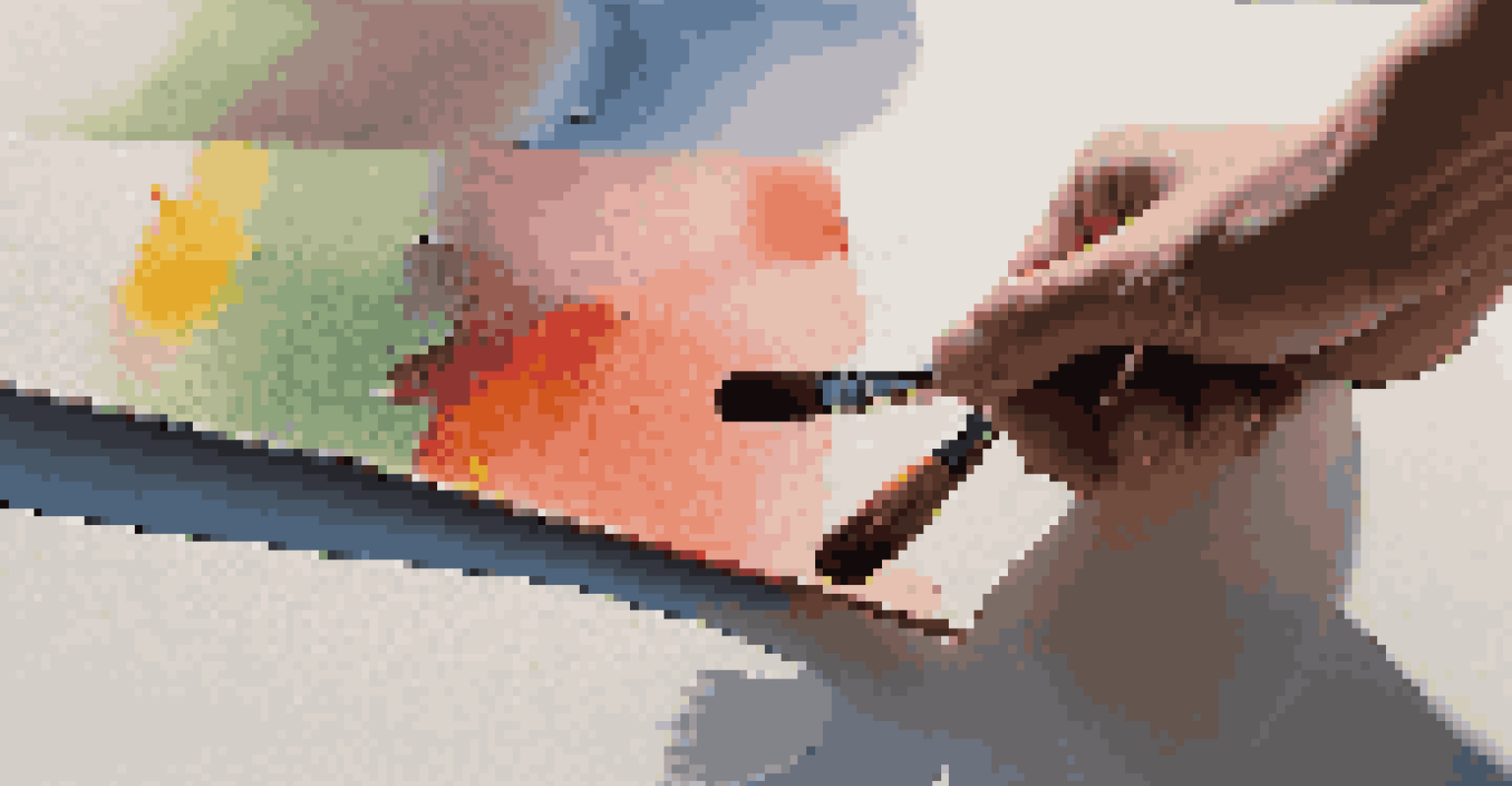Ethics of Art Funding: The Influence of Donor Intentions

Understanding Art Funding and Its Importance
Art funding plays a crucial role in supporting artists and cultural institutions. It helps fuel creativity, allowing artists to produce work that may not be commercially viable. Without these funds, many artistic endeavors would struggle to survive, leading to a less vibrant cultural landscape.
Art is not freedom from discipline, but disciplined freedom.
However, the source of funding can significantly influence the types of projects that receive support. This raises questions about who gets to decide which art is valuable and worthy of funding. The consequences of these decisions can ripple through the art community, affecting artists, audiences, and institutions alike.
As such, understanding the dynamics of art funding is essential for navigating the complex relationships between donors, artists, and the broader public. This sets the stage for a deeper exploration into the ethics surrounding donor intentions.
The Role of Donor Intentions in Art Funding
Donor intentions refer to the specific goals and values that funding sources bring to the table. These intentions can range from a desire to support emerging artists to promoting certain cultural narratives. While these motivations can lead to positive outcomes, they can also impose constraints on artistic expression.

For instance, a donor who wishes to promote traditional art forms might inadvertently stifle innovation and experimentation. Artists may feel pressure to create work that aligns with the donor's vision rather than exploring their unique perspectives. This tension between artistic freedom and donor expectations can complicate the funding landscape.
Art Funding Fuels Creativity
Art funding is essential for supporting creative projects that may not be commercially viable, ensuring a vibrant cultural landscape.
Understanding these dynamics is key for artists and institutions seeking support. By navigating the nuances of donor intentions, they can better advocate for their needs while fostering mutually beneficial relationships.
Navigating Ethical Dilemmas in Art Funding
Ethical dilemmas often arise when donor intentions clash with the values of the art community. For example, funding from controversial sources can lead to debates about the integrity of the art created. This creates a precarious balance where financial support may come at the cost of artistic authenticity.
The role of the artist is to make the revolution irresistible.
Moreover, the pressure to conform to donor expectations can lead to self-censorship among artists. They might avoid certain subjects or themes that could risk alienating their funding sources, raising questions about the true nature of their work. In this way, the ethical implications of funding can extend far beyond the financial transaction itself.
Artists and institutions must grapple with these dilemmas, weighing the benefits of funding against the possible compromises in their artistic integrity. This ongoing negotiation highlights the complexity of ethical considerations in the art world.
The Impact of Public Perception on Art Funding Ethics
Public perception plays a vital role in shaping the ethics of art funding. When funding sources are perceived as contentious, it can lead to backlash against artists or institutions accepting that support. This pressure from the public can complicate funding decisions and influence the types of projects that receive backing.
For instance, if a well-known corporation that has faced ethical scrutiny provides funding, artists may be hesitant to accept it. The fear of public criticism can overshadow the potential benefits of financial support, leading to difficult choices. This dynamic underscores the importance of transparency in funding relationships.
Donor Intentions Shape Art Projects
The intentions of donors can significantly influence the types of artistic projects that receive funding, often impacting artistic expression.
Ultimately, how the public views these partnerships can significantly impact the sustainability of art funding. Artists and institutions must remain attuned to public sentiment as they navigate their funding options.
Case Studies: Successes and Failures in Art Funding
Examining case studies of art funding can provide valuable insights into the complexities of donor intentions. For example, a successful collaboration between an artist and a philanthropic foundation can yield groundbreaking work that resonates with the public. In contrast, a partnership with a controversial donor may lead to protests or calls for boycotts.
These examples illustrate the wide spectrum of outcomes that can arise from donor relationships. Success stories can inspire future funding opportunities, while failures serve as cautionary tales. Analyzing these cases can help artists and institutions make informed decisions about their funding sources.
Ultimately, the lessons learned from these case studies can inform best practices in ethical art funding. By taking a closer look at real-world examples, stakeholders can better navigate their own funding journeys.
Strategies for Ethical Art Funding Practices
To foster ethical art funding practices, artists and institutions can adopt several strategies. First, establishing clear guidelines about the types of funding sources they are willing to accept can help maintain artistic integrity. By being transparent about their values, they can better align with like-minded donors.
Additionally, engaging in open dialogue with donors can clarify expectations on both sides. This creates a collaborative atmosphere where artists can express their creative visions while donors can articulate their intentions. Such communication can lead to healthier, more productive partnerships.
Ethics and Public Perception Matter
Public perception of funding sources can create ethical dilemmas for artists and institutions, affecting their choices and the sustainability of art funding.
Finally, fostering a community of support among artists can encourage collective action against unethical funding practices. By standing together, artists can amplify their voices and advocate for the types of funding that truly serve the art community's interests.
The Future of Art Funding and Ethical Considerations
As the landscape of art funding continues to evolve, ethical considerations will remain at the forefront. The rise of digital platforms and crowdfunding has opened new avenues for artists, but these also come with their own ethical dilemmas. Navigating these new territories requires a thoughtful approach to funding relationships.
Moreover, as societal values shift, so too will the expectations placed on funding sources. Artists and institutions must remain adaptable, continually reassessing their funding strategies in light of these changes. This flexibility will ensure they can maintain their artistic integrity while still securing necessary support.

Ultimately, the future of art funding will hinge on a commitment to ethical practices and transparent relationships. By prioritizing these values, the art community can thrive in an ever-changing landscape.